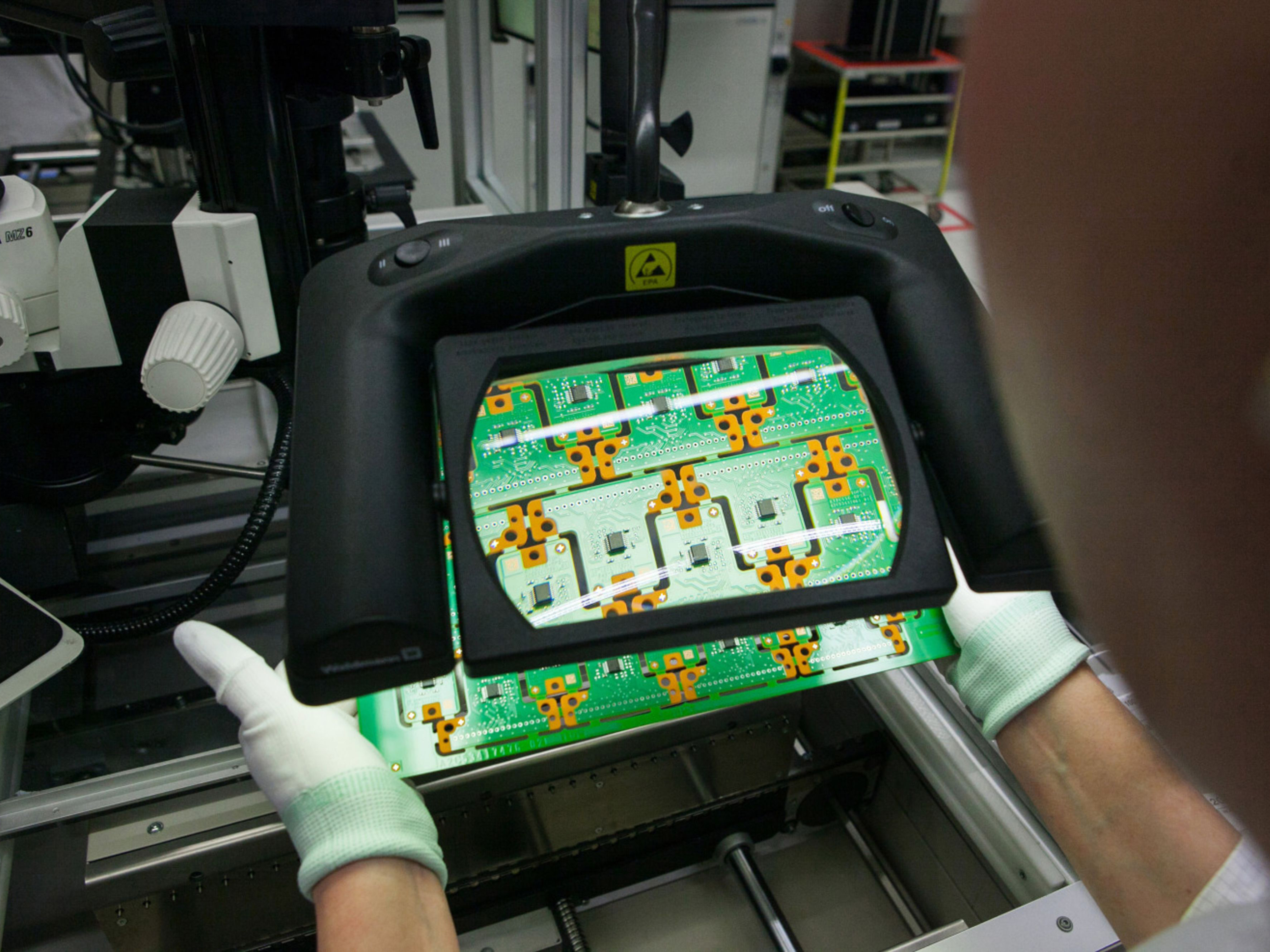
As the computer chip shortage continues to plague businesses across industries, companies are starting to reimagine their logistics strategies, potentially doing away with traditional linear supply chains altogether.
Vehicle manufacturers have been particularly hard-hit by a lack of semiconductor capacity, with General Motors Co., Honda Motor Co., Volvo AB and others announcing production stoppages that are expected to dampen revenues and idle workers. Supply chain disruptions due to the shortage have prompted the Biden administration to regard the solution as a “top and immediate priority.” The question officials are seeking to answer: How can we reengineer the chip supply chain to ensure the right inventory gets to the right place at the right time?
The answer goes beyond simply increasing production capacity. It involves stronger collaboration throughout the semiconductor supply chain, high-quality digital intelligence, and a willingness to embrace new approaches and business models. To start, manufacturers can rethink how they produce computer chips in the first place.
Engineering Chip Versatility
One strategy to avoid future semiconductor shortages would be to make more versatile computer chips. What if various members of the supply network — original equipment manufacturers (OEMs) or chip manufacturers — partnered to produce semiconductors designed and engineered for versatility? Semiconductor fabs and foundries could make chips that are programmed for their final use during the late stages of production, so they serve as a more adaptable appliance, with their ultimate purpose determined by prevailing supply and demand signals. And what if diverse customers downstream in the semiconductor supply chain could offset any potential increase in costs as a result of more versatile chips by partnering to share the costs and risks?
Shifting to a supply ecosystem construct is a critical step in this process. The information and insight that flows across a connected supply ecosystem holds immense operational and strategic value for businesses that are part of that web, regardless of the role they play within it.
On the flip side, delayed communication prevents manufacturers from reacting to volatile supply and demand dynamics. Automakers, consumer electronics manufacturers and other semiconductor-reliant companies that failed to prioritize communication before and during the pandemic have suffered the most from the current chip shortage. Overcoming these communication challenges requires shifting to a network-focused supply ecosystem, in which multiple tiers of suppliers, as well as their OEM customers and their OEM customers’ customers, are connected digitally in real time.
Shifting to Real-Time Data
Manufacturers and industries of every ilk are now hyper-focused on supply chain resilience, reliability and risk-reduction. In order to achieve these goals, companies across the supply chain must abandon antiquated processes and technology in favor of a real-time, digitally connected network in which the relevant parties have the latest data on materials availability, supplier capacity and inventory, and more.
With these elements in place, they can perform advanced modeling and analytics against this data to generate insights. With good insights, they can make collaborative, better-informed decisions and improve near- and long-term planning throughout the enterprise, from engineering and production, to sales and marketing, to finance, H.R. and I.T. With the ability to collect, synthesize and act upon data coming from the supply side as well as from the demand side, the entire business gains a new level of agility and efficiency — during a disruption and otherwise.
A resilient digital supply chain helps partners better predict, assess and mitigate risks together. It’s no longer good enough for a downstream OEM to cancel a semiconductor order based only on its own internal insight. Instead, partners need to share insights and risks for mutual benefit. At the same time that automakers started cancelling demand during the pandemic, other companies providing work-from-home electronics were adding demand. If these companies had communicated and shared risk among them, they might have both been better off.
Whether it’s computer chips or potato chips, the viability of a supply network depends on alignment, collaboration and trust among the members of that network. Instead of an every-company-for-itself mindset, companies need to realize they’re competing as part of a broader supply chain, against other supply chains. This alignment of business interests not only better reflects the complex competitive realities of today’s digital economy, it also may serve as a catalyst for more partnerships and risk-sharing among members of the supply ecosystem, such as between product manufacturers, outsourced chip designers and fabs, providing the impetus for them to jointly explore new market opportunities as part of a real-time business network. Suddenly supply risk becomes eminently more manageable. The benefits of this level of collaboration — to manufacturers, their supply chains and their end customers — are too compelling to ignore.
Patrick Maroney is a principal within SAP’s High Tech Industry Executive Advisory.







